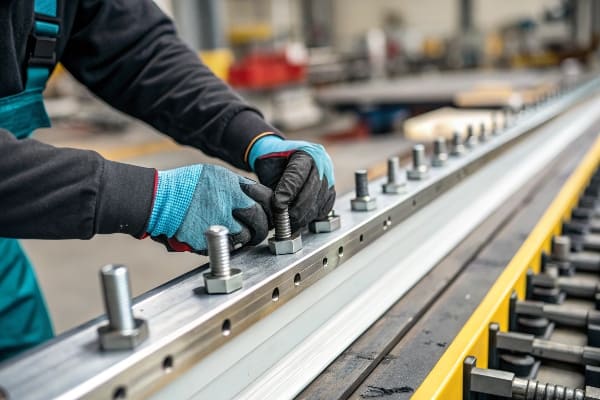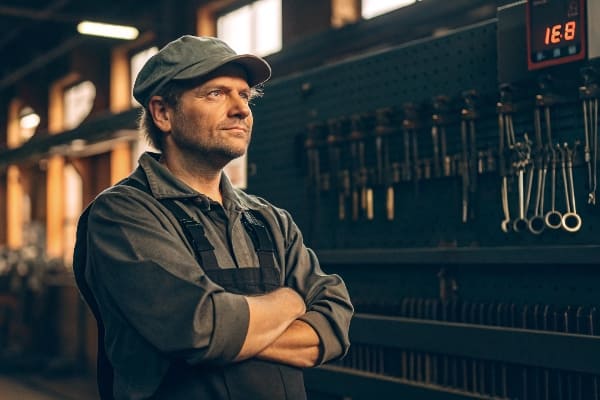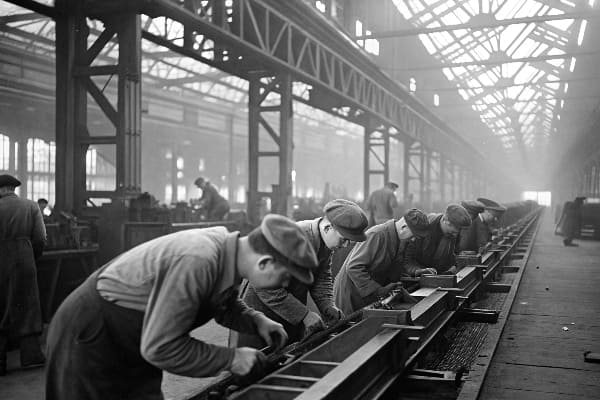Standing on the line for the first time, I felt the pulse of metal and cardboard moving past me, each beat tied to the next deadline and the next promise.
Working at an assembly line factory means predictable rhythms, clear tasks, strict timing, and physical repetition balanced by teamwork, reliable wages, and measurable output; it is neither glamorous nor hopeless, but a disciplined environment where process drives profit and small improvements compound into major gains.

Even if the first answer satisfied your search, stay a little longer and I will break down the trade-offs, the strain, and the real workday that hides behind catchy job ads and glossy HR videos.
What are the pros and cons of working on an assembly line?
All day the conveyor keeps moving, and the pressure to keep pace can feel like a treadmill; yet the same movement offers security because the rules are clear and the volume rarely surprises you.
The job delivers steady pay, clear routines, and fast skill growth, but it also brings monotony, ergonomic stress, and limited creative freedom, so you gain confidence yet risk boredom and fatigue.

Balancing the scales
In my three cardboard display lines the same debate happens: people love the predictability because they can plan life around fixed shifts. They master one motion and hit quota faster each week. Over time that muscle memory grows into real speed, and the bonus for hitting takt time1 shows up in their pay. But I also see shoulders tighten and eyes glaze when the product mix stays unchanged for months. The solution is rotation; I schedule every packer to swap with a gluer or a tester every two hours. The supervisor logs micro-breaks, and we issue wrist braces on day one. A small industrial engineering tweak—a roller table a centimeter lower—can cut back strain and complaints.
Quick view
| Aspect | Upside | Downside |
|---|---|---|
| Job security | High order volume keeps shifts full | Overtime may be mandatory |
| Skill path | Fast learning curve | Narrow specialization limits résumé |
| Pay system | Piece-rate bonuses | Inconsistent if machines stop |
| Physical load | Builds strength | Repetitive strain injuries |
Even with the cons, many stay because the line rewards focus. When a customer like Barnett Outdoors pushes a rush order, the crew sees their effort turn into a hunting-season display that ships on time. That visible impact beats abstract office metrics.
Is an assembler job hard?
I once believed anyone could glide through a shift; after a week on the stapler I changed my mind as my wrists burned and my ears rang.
The work is hard on the body at first, but it becomes manageable with training, rotation, smart tools, and simple fitness habits; the real challenge is sustaining attention through thousands of identical cycles.

Breaking down the difficulty
Hardness wears many masks. Physically, you stand, twist, and lift. Mentally, you chase the line speed while rejecting flaws before they sneak to packing. Emotionally, the bell rings for lunch, yet your head still beats in takt. During peak season my line hits 50 displays per hour. New hires stare at the counter and gasp. By week two they time each motion to the chain’s clack, and the fear fades. I pair rookies with veterans who explain shortcuts: stand with feet apart, keep elbows close, slide instead of lift. We invest in electric screwdrivers2 that shut off at a set torque. That tiny motor saves thumbs and keeps the screws flush.
Hardness versus help
| Challenge | Effect | Mitigation |
|---|---|---|
| Continuous standing | Foot pain | Anti-fatigue mats, scheduled stretches |
| Fast cycle time | Stress errors | Visual aids, jigs, takt lights |
| Noise | Hearing loss | Earplugs, quieter motors |
| Repetition | Mental drift | Task rotation, productivity games |
Is it hard? Yes, like running a well-marked trail: the path is obvious, the miles still count. Discipline replaces brute force, and shared tips turn strain into routine.
What problems did workers have with working on the assembly line?
When I studied the first Ford plants I saw echoes of issues my own team voices today: people do not break machines—monotony breaks people.
Historic and modern assembly lines face injuries, boredom, alienation, and uneven power; solving these problems means redesigning tasks, adding safety gear, and giving workers a voice in how the line evolves.

A closer look at persistent issues
Henry Ford cut chassis time from twelve hours to ninety minutes, but turnover hit 370 % in 1913 because men quit rather than repeat one bolt all day. In my building the turnover risk returns whenever we print the same retail header month after month. People crave progress, so we force small kaizen projects. A packer can suggest a jig to fold edges quicker and sign her name on the patent sheet. That slice of ownership breaks monotony.
Safety remains central. Early lines exposed hands to belts and gears; now guards exist, yet cardboard dust still floats. We installed downdraft tables and empty vacuum bags at each break. Musculoskeletal injuries stay stubborn. We track motion counts and let software flag anyone close to the ergonomic limit so we can swap their station.
Problem snapshot
| Problem | Origin | Modern fix |
|---|---|---|
| High turnover | Monotony | Job enrichment, cross-training |
| Physical injury | Repetition, machinery | Ergonomic tools, automation |
| Loss of autonomy | Rigid pacing | Kaizen teams, suggestion schemes |
| Unequal power | Top-down rules | Transparent goals, peer leadership |
Workers also fear automation. I introduced a robotic arm to glue pads. Rather than hide it, I trained two operators to program it. They became technicians, wages rose, and fear dropped. Problems persist, but openness and shared gains blunt the sting.
What does an assembly line worker do?
Visitors picture robots, yet a real person still guides almost every unit that leaves my dock.
An assembly line worker prepares components, follows set steps to build parts, checks quality, records counts, keeps the area safe, and repeats the cycle until the shift whistle blows.

Inside one shift
At 7:00 a.m. I clock in, scan the work order, and pull flat sheets of E-flute board3. My first task is pre-creasing: I feed sheets into the press, watch for clear channels, and stack them hip-high. Next I pivot to the fold-and-glue cell. A foot pedal applies food-grade adhesive while my hands fold flaps into a tray. Every ten units I eyeball alignment against a go-no-go gauge. If glue wicks out, I flag the batch on the Andon light and call maintenance.
After break I rotate to quality. A caliper checks slot width. I stamp date codes and confirm printing matches Pantone 0214. Data goes into the MES tablet. In the last hour I 5S5 the zone: sweep scraps, restock boxes, log defects.
Day at a glance
| Time | Task | Purpose |
|---|---|---|
| 07:00–09:00 | Pre-crease boards | Prepare blanks |
| 09:00–11:30 | Fold & glue | Form structure |
| 11:30–12:00 | Lunch | Recover |
| 12:00–14:30 | Quality check | Catch defects early |
| 14:30–16:00 | Packing & 5S | Protect product, clean zone |
Each role is narrow yet connected. If the pre-creaser slips, the gluer fights jams, packing slows, and David’s crossbow display arrives late to Arkansas. The worker does not just “push a button”; he guards the flow that ties design, marketing, and customer launch into one unbroken chain.
Conclusion
An assembly line factory tests patience and muscles, but with smart design, honest feedback, and small shared victories, the line transforms from a grind into a reliable engine of value.
Understanding takt time is crucial for optimizing production efficiency and meeting customer demands effectively. ↩
Explore how electric screwdrivers enhance efficiency and reduce strain in manufacturing processes, making work easier and safer. ↩
Explore this link to understand the versatility and benefits of E-flute board in packaging and design. ↩
Learn about Pantone 021’s significance in color matching and branding to enhance your design projects. ↩
Discover how the 5S methodology can improve efficiency and organization in your workspace. ↩

